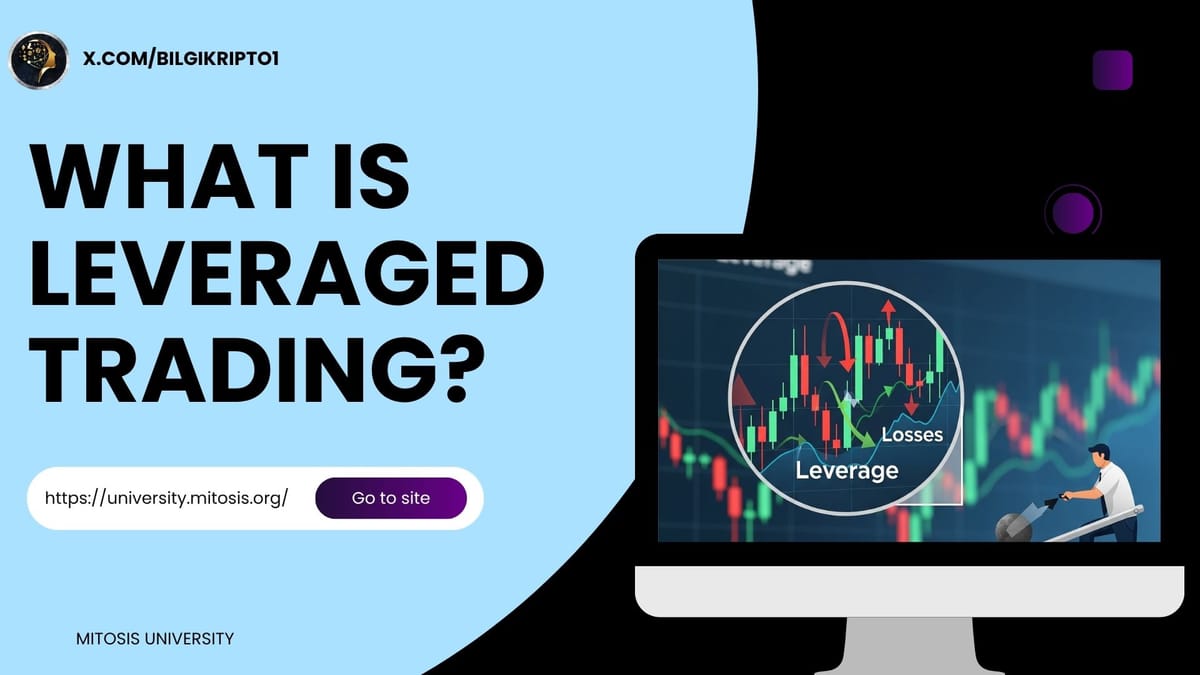What is Leveraged Trading? How Leverage Works in Cryptocurrency

In the world of cryptocurrencies, everyone is after big profits. However, some want to reach those gains faster. One of the most popular methods used for this is leveraged trading.
So, what exactly does leveraged trading mean? Let me explain it as simply as possible: You have 100 TL in your pocket, but you want to make a 1,000 TL purchase. If you borrow the remaining 900 TL from someone and spend it, this is essentially using leverage.
In crypto exchanges, leverage works the same way. You open a trade with more money than you actually have. This increases your potential profit… but beware, your losses grow just as fast. Let’s dive deeper into how this all works.
Why Use Leverage?
Leverage allows a trader to open larger positions with smaller amounts of capital. This means:
- Greater potential profit
- More efficient use of capital
- Opportunity to use the remaining funds elsewhere
For example:
With just $100 as collateral, you can open a $1,000 Bitcoin position. In this case, you’re using 10x leverage.
However, it’s important to understand: The higher the leverage, the greater the risk. Opening a position only thinking about profit can lead to significant losses.
How Does Leveraged Trading Work?
In crypto trading, leverage is commonly used via futures contracts or margin trading.
Before opening a position, you need to deposit a small initial margin. This serves as collateral for your leveraged position.
For example:
- You want to open a $1,000 trade.
- You use 10x leverage.
- You only need to deposit $100 as your initial margin.
Once your position is open, a maintenance margin also comes into play. This is the minimum balance required to keep your position open. If the price moves against you and your balance falls below this level, your position will be liquidated.

Examples of Leveraged Trading
Long Position
- You expect BTC to rise in value.
- You open a $1,000 long position using 10x leverage ($100 margin).
- If BTC increases by 20%, you earn $200 profit.
But...
- If BTC drops by 10%, your $100 margin is gone.
- Your position gets liquidated.
Short Position
- You expect BTC to fall.
- You borrow BTC from the exchange and sell it.
- If the price drops, you buy back cheaper BTC and keep the difference.
But if the price rises:
- You’ll need more money to buy it back.
- If your margin isn’t enough, you get liquidated again.
What Are the Risks of Leveraged Trading?
Leveraged trading is like a double-edged sword. It multiplies your gains, but also your losses. Here are the key risks:
1. High Risk of Loss
With leverage, even small price moves can lead to big losses. Especially with 20x or 50x leverage, a 1-2% drop could wipe out your margin completely. Many traders have lost everything in a single day.
2. Liquidation Risk
If the market moves against you, the exchange automatically closes your position. This is called liquidation. You may lose your entire margin, and in some cases, even more due to fees and slippage.
3. Psychological Pressure
Leveraged trading creates serious psychological stress. Constantly monitoring your position and reacting to price swings can lead to poor decisions. Panic trading often results in losses.
4. Poor Risk Management
Many beginners don’t use stop-loss or take-profit orders. This causes losses to grow uncontrollably. Without proper risk management, leverage becomes extremely dangerous.
5. Volatility Risk
Cryptocurrencies are already very volatile. A coin’s price can change by 10-20% within minutes. For leveraged positions, this can be a nightmare.

How to Manage Risk in Leveraged Trading?
To be a successful leveraged trader, risk management is essential.
Here are a few golden rules:
- Never trade with all your funds.
- Use stop-loss orders.
- Set take-profit targets.
- Use low leverage (2x–5x) if you're a beginner.
- Stay informed about the market.
- Don’t trade out of FOMO (fear of missing out).
Before opening a leveraged position, understand how the exchange works and practice with demo trades if possible.
Who Should Use Leverage?
Leverage is for experienced and disciplined traders. If you can’t track the market, don’t understand risk, or make emotional decisions, it can be very dangerous.
If you’re a beginner, start with spot trading. Learn the basics, and then try small leverage gradually.
Final Thoughts
Leverage is a powerful tool when used correctly. It allows you to trade larger positions and earn more profit with smaller capital. But behind this advantage lies a serious danger: the risk of losing everything.
Always remember:
Leverage can amplify profits, but it can also amplify losses.
So before using leverage:
- Learn the system well,
- Understand the risks,
- And most importantly, never trade with money you can’t afford to lose


Comments ()